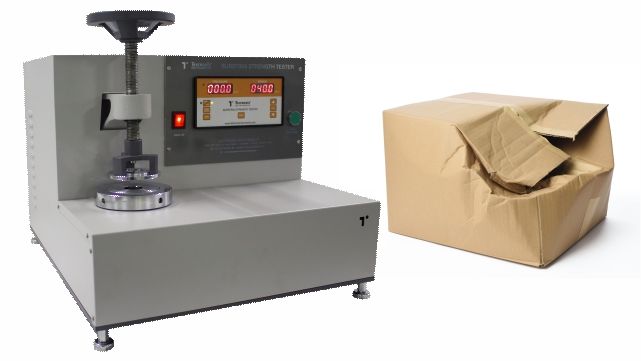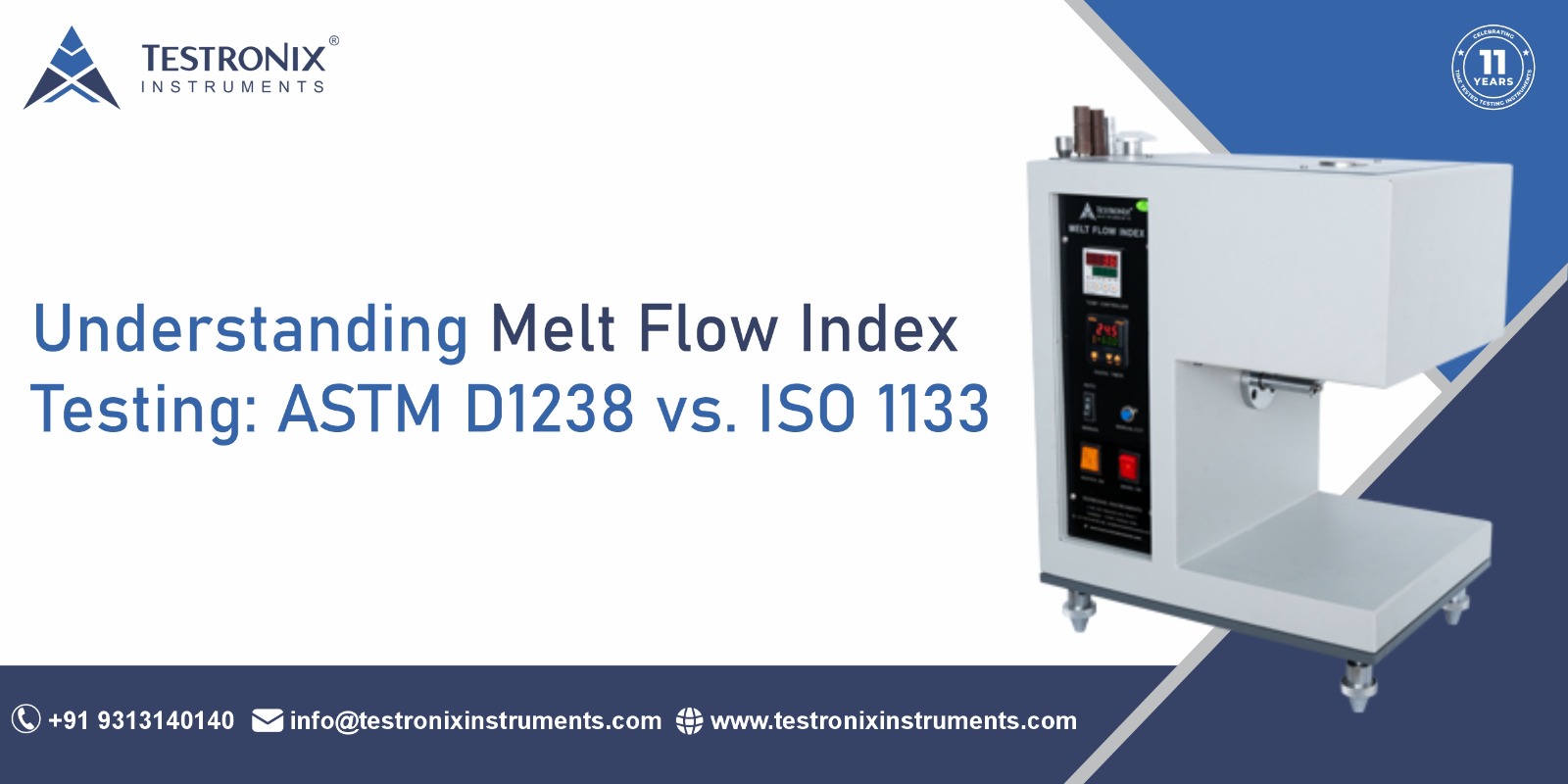ASTM D638 and ISO 527 are two of the most widely recognized standards used for characterizing the mechanical properties of plastics. Both documents outline the testing and determinations of various tensile properties of plastics, including yield strength (elongation) and elastic modulus (modulus of elasticity).
Although both test methods are attempting to quantify roughly the same properties, they are each slightly different from one another by way of test protocol, specimen geometry, and in the calculations. These slight differences provide implications for user understanding as one must interpret the data accordingly and this likely provides implications for global compliance in mechanical testing for plastics.
What is ASTM D638?
ASTM D638 is a standard test method for determining the tensile properties of reinforced and unreinforced plastics. This test involves placing a dumbbell-shaped specimen under a tensile load until it fails, followed by the determination of tensile strength, elongation, and modulus of elasticity. The gathered information is utilized for quality control, material selection, and to demonstrate that plastic products are suitable for mechanical usage in service.
Purpose of ASTM D638
As the name suggests, ASTM D638 was created to provide a standard way to test the tensile properties of both unreinforced and reinforced plastics. These properties include tensile strength, elongation at break, and tensile (Young's) modulus. This standard serves to ensure that mechanical data will be considered useful, consistent, and reliable for applications in determining material selection, product design, and quality control from consumer goods to structural components. Consistent test methods and specimen specifications are established in this standard.
What is ISO 527?
ISO 527 is a set of International Organization for Standardization (ISO) standards that describes the basic principles and test conditions for the tensile characteristics of different plastics and plastic composites, including tensile strength, modulus of elasticity, and elongation at break, in tension testing.
Each part of the standard (e.g., ISO 527-1, ISO 527-2) describes general procedures and specific test conditions for significant different types of plastics and composites, including molded and extruded plastics, films, and plastics composites.
What is the Purpose of SO 527?
ISO 527 is intended to provide a worldwide uniform method, by using standard processes, to obtain the tensile properties of plastics. The goal is to obtain agreement of test results on the same materials, from time to time, by reliably testing in different labs and countries.
This information can be valuable to assist manufacturers, researchers, and quality control groups, to compare the materials' strength, flexibility, and behavior under tensile stress.
ASTM d638 vs ISO 527: What is the Difference
Plastics can be tested in tension or flexure, ASTM D638 and ISO 527 are testing standards for their tensile characteristics. However, they differ in terms of specimen size, testing speed, data analysis, and geographic preference. ISO 527 is more widely used internationally, particularly in Europe and Asia, while ASTM D638 is a North American standard.
Here are the key differences:
|
Features |
ASTM d638 |
ISO 527 |
|
Organization |
An ASTM International standard, has historically been favored by suppliers and manufacturers in North America. |
An ISO standard has been utilized and adopted globally, particularly in Europe and Asia. |
|
Sub-Standards |
While D638 is the primary standard for rigid plastics, D882 is intended for thin films and sheets. |
The standard is divided into several parts, such as: — ISO 527-1: General principles. — ISO 527-2: Determining testing conditions for molded and extruded plastics. — ISO 527-3: Testing of films and sheets of less than 1 mm on the thinnest edge. |
|
Testing Speed |
The speed used for testing is determined by the material, and is held constant for the complete test. However, test speeds can widely vary from 1 to 500 mm/min. |
Although the test involves the use of different test speeds for different parts of the test. For example, a very slow speed (1 mm/min) is used to determine a tensile modulus, and the remaining part of the test is often completed at a higher rate (50 mm/min). |
|
Modulus Calculation |
Usually, Young's modulus by the steepest slope over a number of specified sections. |
Calculates the modulus as the slope of the curve between 0.05% and 0.25% strain which can be done via a chord, or linear regression calculation. |
|
Data Reporting |
Reports tensile yield strength, tensile strength at failure, elongation to failure, and tensile modulus of elasticity. It also contains the option to report Poisson's ratio. |
Definition of tensile strength occurs at the first local maximum point on the curve which is relevant to some materials that have a yield point. Reporting can vary as well. |
When to Use ASTM D638 and ISO 527?
When to utilize ASTM D638
-
Region: This standard is applicable to any marketplace or customer base located in North America.
-
Material Thickness: This method can be used for rigid plastics with thickness between 1.00 mm and 14 mm.
-
Standard Type: It is an accepted standard in the U.S. to evaluate fundamental mechanical properties of plastics.
When to apply ISO 527
-
Geographic Location: Utilize this standard for plastics marketed in Europe and Asia.
-
ISO 527-2 focuses on molded and extruded plastics, with additional sections covering films, sheeting, and fiber-reinforced composites.
-
For international projects, consider testing to international standards to ensure data compatibility.
Applications in Different Industries
Both the standards ASTM d638 and ISO 527 are utilized in different industries such as Automotive, Aerospace, Construction, Packaging, and consumer goods industries.
Here are the industries explained in detail:
-
Automotive Industry
In the automotive industry, we utilize ASTM D638 and ISO 527 tests to characterize plastics for parts like dashboards, bumpers, and other interior trim pieces, durability and strength in relation to those plastics. The tests verify the materials can tolerate mechanical loads, temperature swings, and for long periods of time. We can then verify or confirm safety, durability, and overall performance of the vehicle and its components.
-
Aerospace Industry
Aerospace companies utilize tensile testing to assess the use of high-strength polymers for components in aircraft cabin interiors, insulation panels and lightweight structures. Regulatory specifications stipulated in ASTM D638 and ISO 527 show that these materials show defined safety and performance requirements, while also having high strength-to-weight ratios and high resistance to extreme exposure to environmental conditions, such as pressure and temperature.
-
Construction Industry
Tensile tests confirm the elastic properties and strength of plastics used in pipes and fittings, insulation, panels, etc. The data provided from both ASTM D638 and ISO 527 test methods assure necessary information on the resilience of materials to both stress and load-bearing conditions, while exposing the material to ambient weather conditions; hence the information provided gives the architect the necessary data in assessing what plastic(s) can be relied on deriving safe and durable constructions, residential applications, as well as industrial infrastructures.
-
Packaging Industry
Tensile testing is a critical parameter in the packaging industry through tests that determine the strength, stretch, and sealability of wraps, films, and containers. The use of ASTM D638 and ISO 527 standards ensures that the packaging and shipping of goods are correctly packaged, so that the goods take no damage in transport and are stored properly to maintain shelf life.
-
Consumer Goods Industry
Consumer goods manufacturers use these standards to test plastic parts of products that include appliances, toys, and electronic enclosures. Tensile testing for the material establishes elasticity, strength, and resistance to normal wear which indicates that products will be safe and reliable and of durability and quality expectation over long-term use which promotes customer satisfaction and performance.
Conclusion
Both ASTM D638 and ISO 527 standards share a central aim - to evaluate the tensile properties of a plastic; however, they differ in terms of specimen geometry, test conditions and computations. Which one is better depends on factors like region, industry, and rules governing compliance. Accurate, defendable, and comparably presented data in the global marketplace across regions, industries, and compliance standards will be made possible with an understanding of both standards.






